Who are American aircraft carriers afraid of in the Mediterranean?

Today in the Mediterranean Sea there is, I would say, an ambiguous and funny situation. The great and mighty US Navy, represented by two aircraft carrier strike groups with NATO ships (the same from Great Britain) as backup dancers, are more than cautiously located at a decent distance from the coastline.
No, it’s perfectly clear that planes, if anything, can easily fly to almost any point on the Map of Israel, Palestine and other countries, but... But it turns out that no one knows the exact location of the ships, but they prefer to be outside the theoretical radius hit by an anti-ship missile.
In general, this behavior speaks exclusively of two things:
First: the command of the group of ships... is too cautious, not to say cowardly.
Second: the command of a group of ships has accurate data about the missile threat from the shore.
In fact, in the second case there is a certain common sense. Indeed, an anti-ship missile could actually fly from the Gaza coast. And even more so from the Lebanese shore.
Lebanon. Let's start with him. Hezbollah has settled in Lebanon as if it were at home (and in fact, at home).
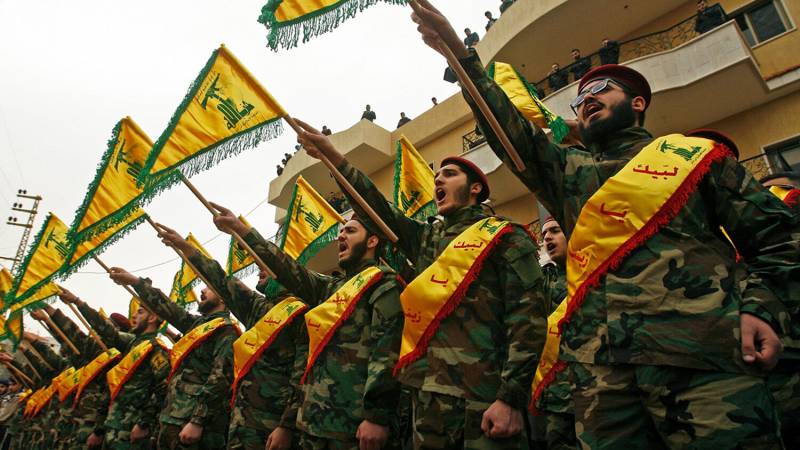
A large and serious player in the region, with an army of thirty thousand armed with Iran. Yes, since Hezbollah is a Shiite organization, it is clear that behind the “Lebanese” is Iran, or more precisely, the IRGC. The Islamic Revolutionary Guard Corps is a serious organization whose goal is to export the Islamic revolution to other countries.
Hezbollah in this regard is an excellent instrument of the IRGC, advocating the creation of an Islamic state in Lebanon modeled on Iran. The ideology of Hezbollah is based on slightly revised ideas of the leader of the Islamic revolution in Iran, Ayatollah Khomeini.
The weapons of Hezbollah fighters are just fine. Naturally, Iran supplies them with everything they need and even more: according to intelligence data, Hezbollah is armed with hundreds of MLRS installations and thousands of missiles for them. There are also anti-ship missiles. The main striking force of the IRGC is the missile forces, so the Iranians have something to share, the same Gaders.
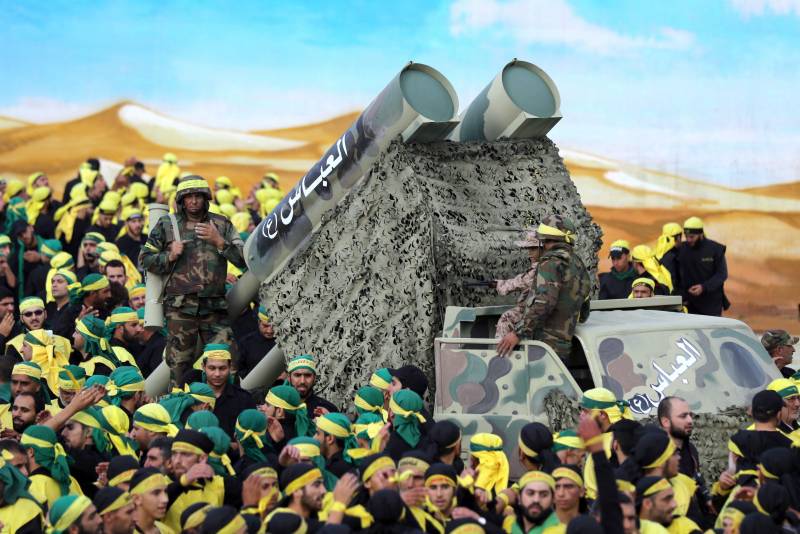
Back in 2006, Hezbollah attacked the Israeli corvette Hanit with an anti-ship missile, and it was more than successful. True, “Khanit” received minimal damage, but a precedent occurred.
So there can simply be no doubt that Hezbollah has anti-ship missiles. Iranian, Iranian-Chinese, just Chinese - they exist, and given the certain frostbite of these guys, the missile could easily fly towards American ships. Missiles from the same OTRK "Zilzal-2".
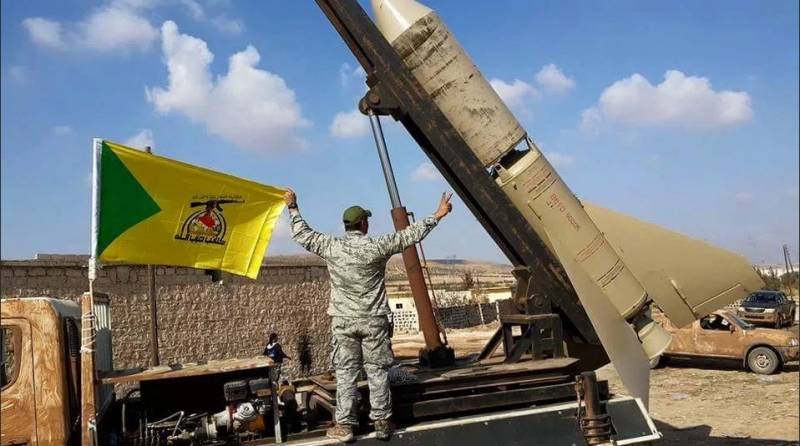
And considering that Hezbollah participated in the civil war in Syria on the side of Bashar al-Assad, something Soviet-Russian could easily turn out to be from his generosity. Did Hezbollah militants end up with Russian Osa air defense systems? Back in 2012, Syrians shared generously.
So the calculation option is very difficult.
It can also fly from Gaza. From Hamas. And it’s also difficult to say whose will fly.

Hamas is not a single organism; there are many wings and branches that enjoy the support of those who are ready to do so. Therefore, in addition to Iran, which does not care who fights against Israel, Shiites or Sunnis, Turkey, Qatar, Saudi Arabia and Bahrain are regularly listed as sponsors of Hamas. That is, those who have no problems with either weapons, nor with money.
So both Hezbollah and Hamas could have anti-ship missiles.
Therefore, if the American Marines land on the shore in Lebanon (well, shouldn’t they land in Gaza?), they will do it not on landing craft, but on tiltrotors or helicopters, fortunately, there are more than enough of both on aircraft carriers.
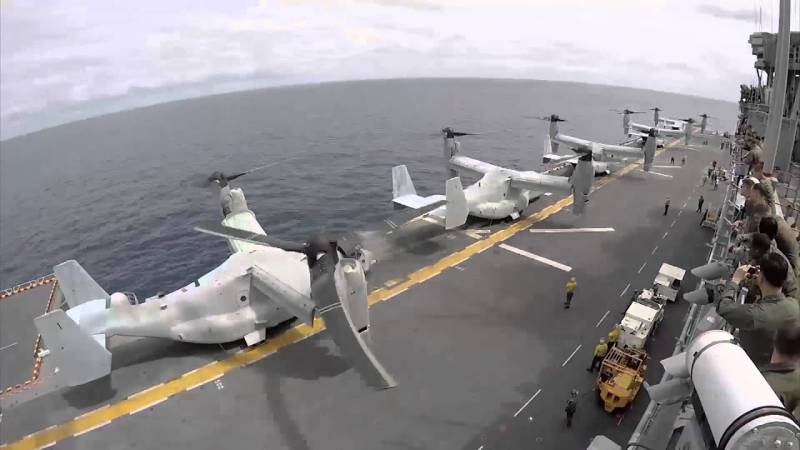
What happened on these same shores in 1983, when a contingent of US Marines landed in Beirut as part of a multinational peacekeeping effort, is unlikely to be repeated. Then the Marines disembarked from landing ships anchored near the shore.
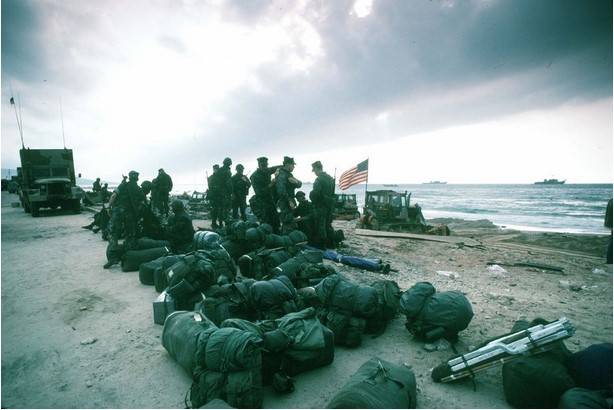
The photo above shows two Newport-class landing ships, a tank (LST), a group of Marines on the beach, and a smaller landing craft moving towards land. Neither the escort frigate, nor the destroyer, nor the cruiser are visible in the picture. No cover at all. And all this was some 40 years ago.
Today such a scene is, to put it mildly, unrealistic. Thanks to the proliferation of anti-ship missiles, the US Navy is likely far over the horizon, protected by a ring of radars supported by ship-to-air and air-to-air missiles on aircraft, short-range defenses designed to detect and destroy approaching missiles.
Although the US Navy has not reported its location in the eastern Mediterranean, the aircraft carrier USS Ford and its escort are at least 70 miles off the coast. That is, at a distance of confident detection of anti-ship missiles with subsequent measures.
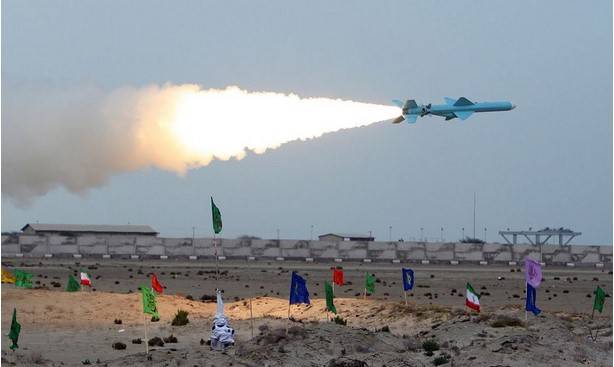
An Iranian Nur missile is launched during military exercises on April 25, 2010 in southern Iran, near the Strait of Hormuz.
That's why such a product cannot fly 70-100 kilometers and make a splash among the crews of American ships? Yes, the fact of the matter is that it can.
There is such a thing as Iran's "Axis of Resistance". It is a network of groups scattered throughout the Middle East that receive significant support from Tehran. Gaza-based Hamas, Lebanon-based Hezbollah and Yemen's Houthi rebels have all received and will likely receive large shipments of weapons to varying degrees, including rockets, anti-ship missiles, and in some cases even ballistic missiles . Why? Well, they all seem to consider Israel an enemy, and the organization, training and equipment of these groups allows Tehran to be able to attack what Iran considers its number one enemy in the world.

Well, the United States, as Israel’s main partner in Middle Eastern affairs, is quite naturally in second place.
Of course, Iran does not yet have intercontinental ballistic missiles at its disposal, so everything is quiet here for now, the United States is at a safe distance. But to plant an anti-ship missile on board an aircraft carrier, and even at the hands of the same Houthis...
Agree, the idea is cool!
But there are more than enough hot guys from Hamas and Hezbollah to keep the Yankees on some suspense. Of the two groups directly opposed to Israel, Hezbollah is the larger and better equipped. Hezbollah is known to be armed with Iranian Nur anti-ship missiles, a copy of the Chinese C-802 anti-ship missile.
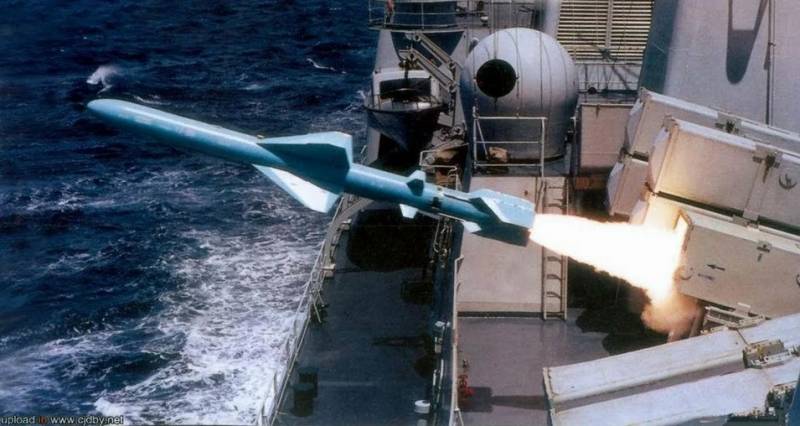
The Nur is a low-flying, subsonic anti-ship cruise missile, similar to the American Harpoon or the French Exocet. Nur can deliver a 155 kg warhead over a distance of up to 120 km. This is a complete copy of the Chinese S-801/YJ-81 missile. It was this kind of missile that damaged the Eilat-class corvette Hanit, and in 2016 the military transport HSV-2 Swift of the UAE Navy was sunk.
There are also unconfirmed reports that Hezbollah has larger and more powerful Russian-made anti-ship missiles with a range of up to 300 km, American sources wrote about this, citing some intelligence data. This was, as it were, a hint at the possibility of Syria transferring Russian Bastion-P coastal anti-ship systems with Yakhont missiles to Hezbollah.
Yes, Yakhonts fly such a distance. However, this scenario is, to put it mildly, somewhat fantastic. Russia has so far supplied Syria with only two such complexes, and transferring at least one of them to who knows who would greatly weaken the already weak capabilities of the Syrian army.
Well, “Rubezhi”, which is also in service with the Syrian troops, does not have such a range. Maximum 80 km. But the 500 kg warhead of the P-22 Rubezh missile looks more impressive than the 200 kg of the Yakhont.
So if Hamas and Hezbollah have anti-ship missiles, they are Iranian-made. But this is also a serious point, because ship crews will have to constantly be in a state of combat readiness, and this is not so easy. It is also possible that Hamas has a decent supply of anti-ship missiles.
In 2011, Israeli forces stopped and inspected the merchant ship Victoria, finding 50 tons of Iranian-made weapons destined for Hamas. These included two launchers for Iranian copies of the Chinese S-704 anti-ship missile, known as Nasr, and six Nasr missiles.
Despite its small size, Israel has a combat-ready navy that is capable of solving problems to ensure the security of the country's maritime borders. However, anti-ship missiles remain a problem for groups such as Hezbollah.
Therefore, the patrol service is good, but the question is: did any rockets get through the blockade of Gaza and did they reach Hamas? This is possible even though Israeli warships were blockading the coast. But the fact that the Israeli navy operated close to the coastline and provided support to Israeli army units operating in Gaza, within range of any missiles, proves that either Hamas did not have missiles, or the Israeli army did an excellent job of storing them.
Agree that given the course of events that took place between Israel and Hamas, the latter would certainly have used its missiles to attack Israeli ships. Israeli ground forces needed naval fire support, and Israeli naval units took calculated risks to provide that support.
And nothing. Which indirectly indicates that the Hamas anti-ship forces were most likely destroyed along with missile stocks and launchers.
The same cannot be said about Hezbollah. This group did not actually go to war with Israel over Palestine, and therefore its combat capabilities have not been weakened in the least. And most likely, both in Jerusalem and in Washington, everyone who should know about it knows about it.
Therefore, US Navy ships prefer not to risk anything, operating further from the coast. The presence of Yakhont missiles would require American ships to remain 300 kilometers off the coast, but this would still not be a serious impediment to operations.
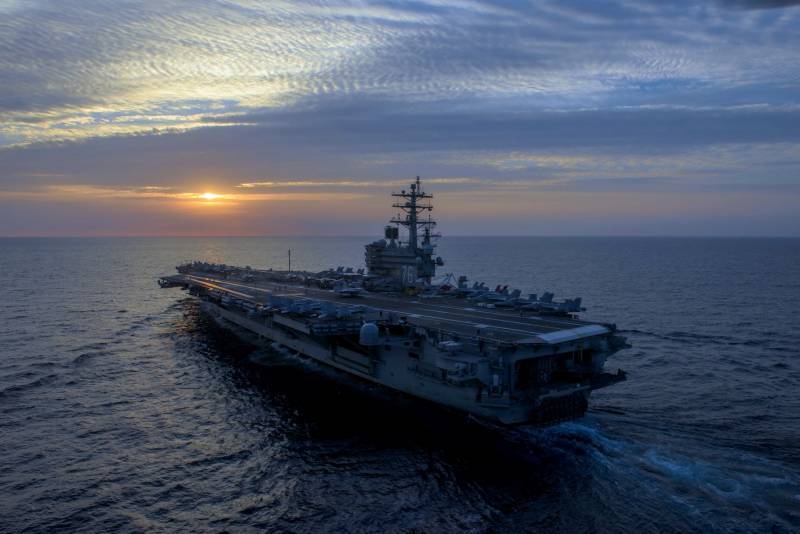
US warships can fight at long ranges, so weapons like the Tomahawk cruise missile can still be easily used against Hezbollah targets while remaining out of range of the Lebanese group's own weapons.
Hack and predictor Aviator
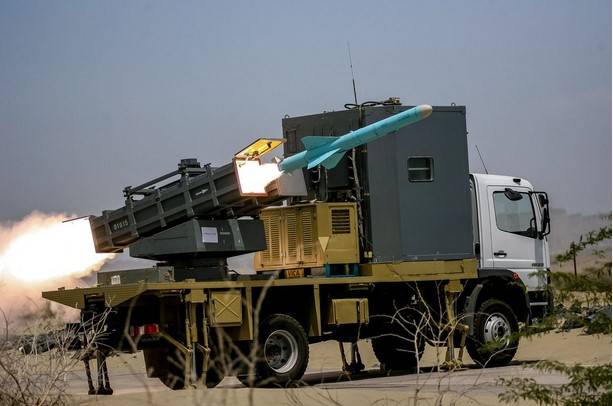
Thanks to Iran, anti-ship missiles have proliferated throughout the Middle East and pose a significant threat to those who would pursue power politics in the region. This is a fact that some will have to come to terms with. The world will not be the same as it was during the Middle East crises of the last century.
Naturally, anti-ship missiles are absolutely not a panacea for all problems, at least while they are in effect. aviation, cruise and ballistic missiles.
And yes, the flight from the deck of the USS Ford in the eastern Mediterranean to Israel may take a little longer, but the ship is home to 5000 sailors and Marines, so it's best not to risk it. So the Americans do not seek adventures beyond what may befall them.
Of course, the sight of a huge aircraft carrier on the roadstead of the same Haifa would greatly support the morale of the Israelis. But how much does an Iranian-made cruise missile copied from a Chinese anti-ship missile cost? And what kind of things can she do once she’s inside the ship’s compartments?
If someone wants to check, it’s definitely not the American side. So to whom is cowardice, and to whom is reasonable caution, right?
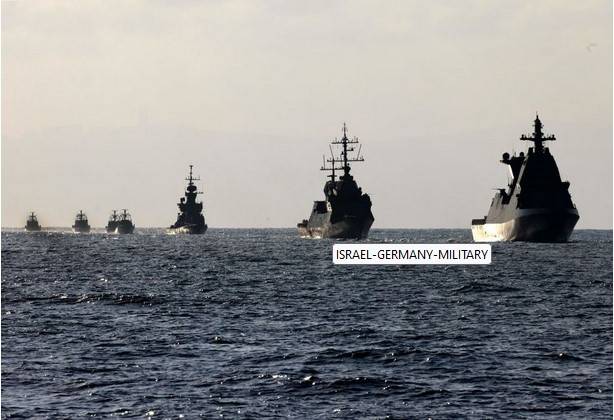
Information